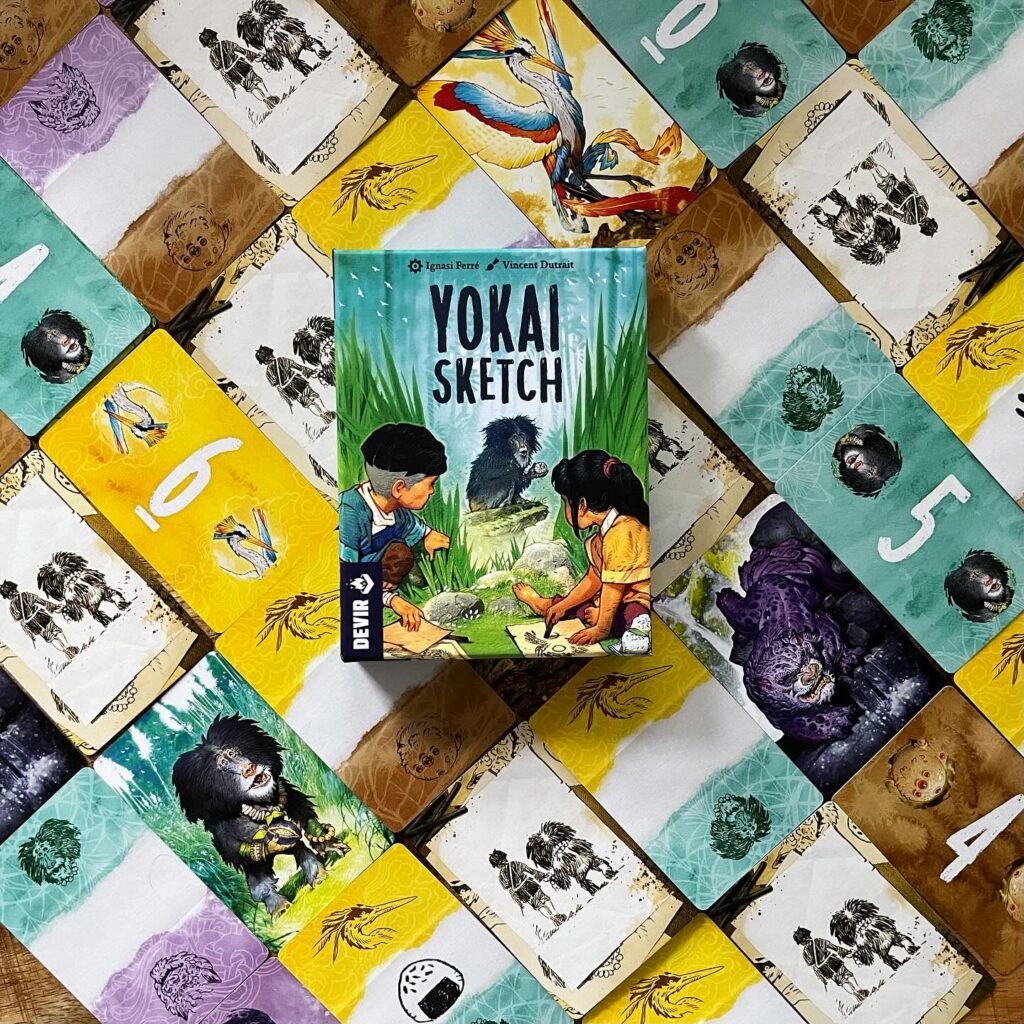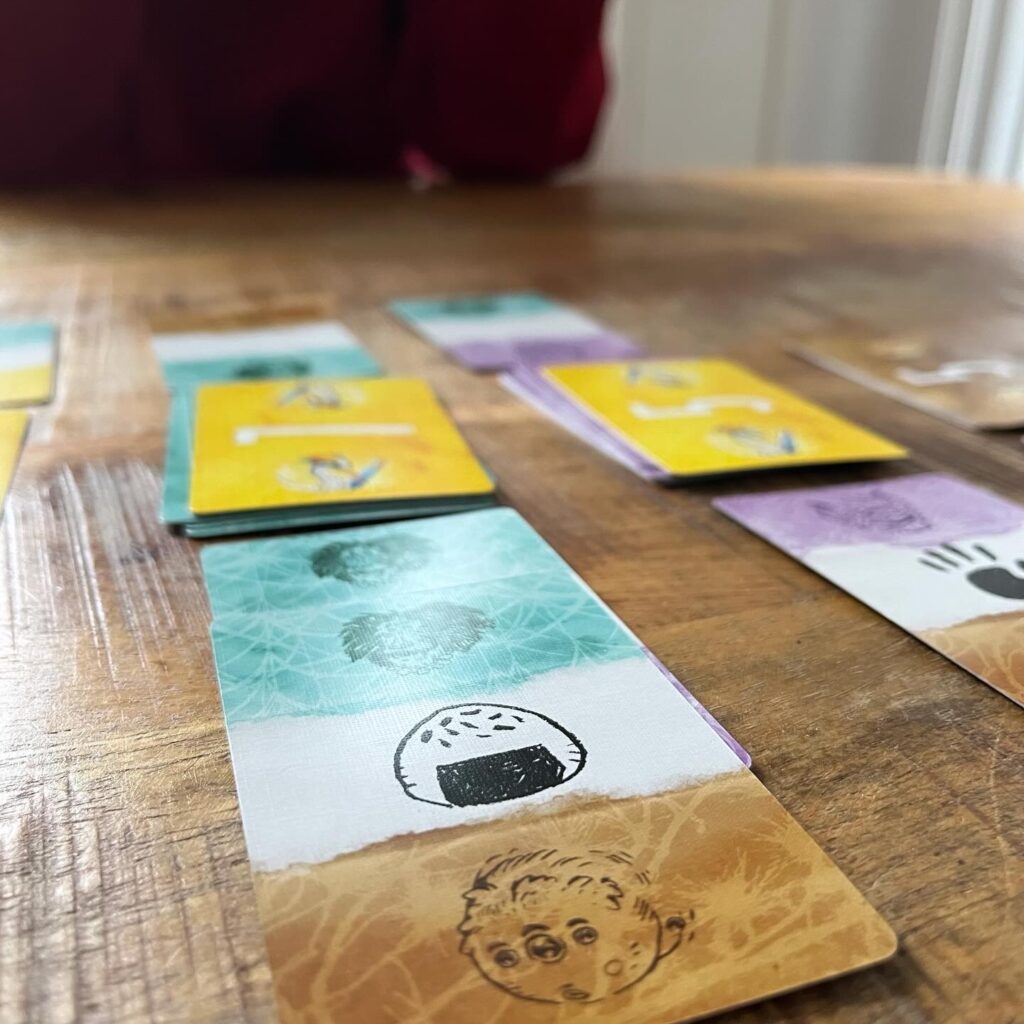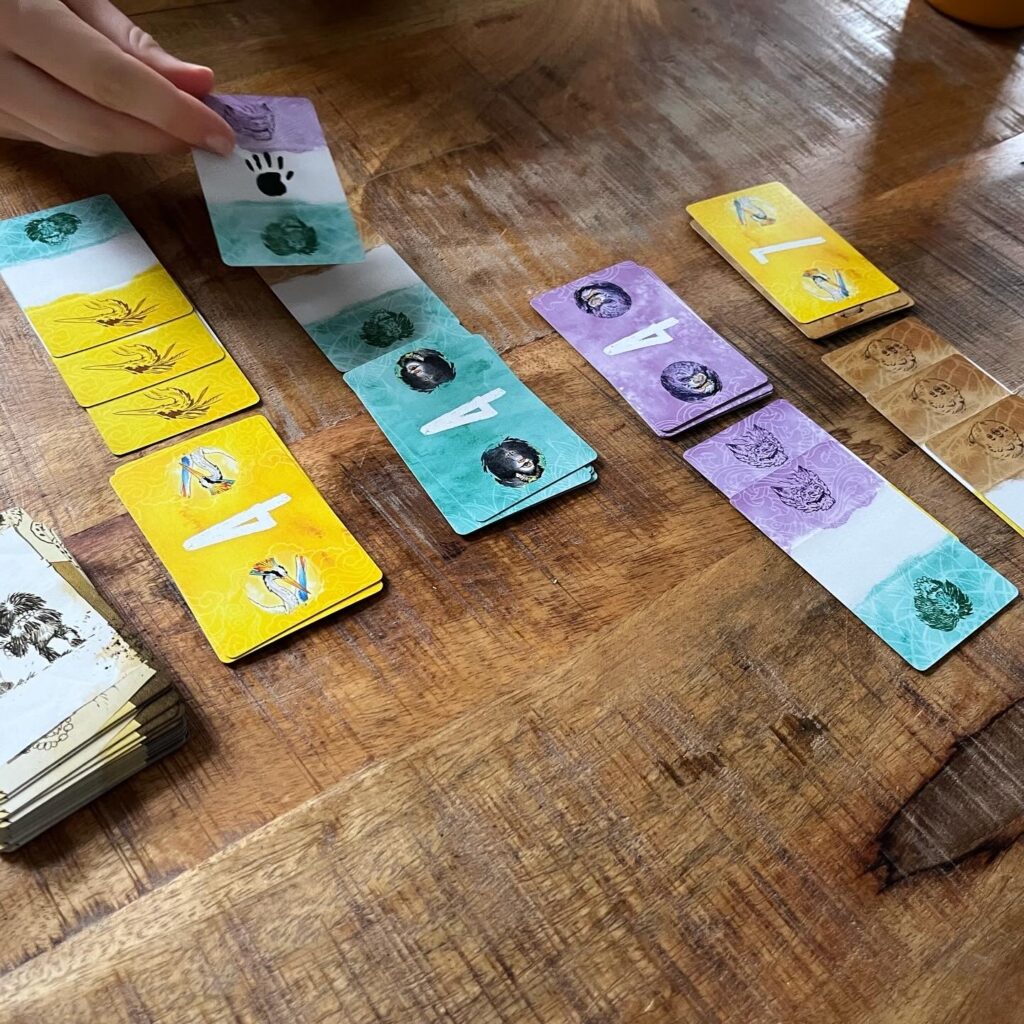In this Japanese forest Yōkai live. These are mysterious creatures and spirits from Japanese folklore. Although your parents warned you about these creatures, yet you are curious and eager to learn all about them. By sketching different creatures, you slowly fill your notebook. Do you know how to make the best drawings and notes? Then you will win Yōkai Sketch.
Background and goal
Yōkai Sketch is a two-player game in which the players make sketches of four different Yōkai. Yōkai are supernatural creatures, spirits and entities from Japanese myths, stories and folklore. Yōkai means something along the lines of “strange apparition,” but ir is also often translated in Western media as demons or their equivalents. Other terms for Yōkai include Ayakashi or Mononoke (you might know about the princess from the Studio Ghibli movie).

Open on the table, players of four different types place Yōkai cards with the side with numbers facing up. During the game, players will play sketch cards to “win” a Yōkai for themselves. A won Yōkai players place in their notebook. Once a pile of cards is empty, players count the cards the cards in their notebook and the player with the most points wins.
Gameplay
As a total of 4 stacks are placed this means a total of 4 numbers lie face-up. These are the Yōkai that players can compete for. The number indicates the amount of points this Yōkai is worth and also how many sketch cards must be next to this Yōkai for a player to win this Yōkai.
At the beginning of the game, each player receives 3 sketch cards. Each turn, a player draws a sketch card and plays 0 – 3 sketch cards. A player must play at least 1 sketch card if that player has 4 sketch cards in hand.
Each sketch card has two colors that correspond to 2 of the 4 Yōkai. You can therefore place the sketch card with one of these two Yōkai. Players each place cards on either side of the Yōkai and once there are as many cards on either side as the number of the top card in the pile, the player who has played most cards at that pile wins. This player discards the cards played while the other player’s cards remain to get a head start in order to win the newly revealed card.


Some cards also have a special feature. The cards with a hand cause the top Yōkai card from another pile to be placed on top of the pile where the card was just played with the hand. Playing a card with an Onigiri (a Japanese rice ball) allows you to move another player’s sketch card. This continues until one of the piles is empty.
Verdict
Yōkai Sketch is a simple card game with twisted tactical depth. Players are faced with multiple choices that give them a lot of influence over the course of the game. Players can choose how many cards to play during their turn, but can also save cards to play more cards at once later in the game. Playing many cards at once means you have fewer cards at your disposal. Cards can be used for two different Yōkai, which also means you have to act carefully on which Yōkai you bet on, without the other player taking it. The different effects provide additional dynamics.

This fast-paced card game is quick to learn, and partly because of its depth and dynamism, it is sufficiently replayable to take along as a regular treat to kill some time in pairs. This beautifully illustrated card game is truly a picture.



